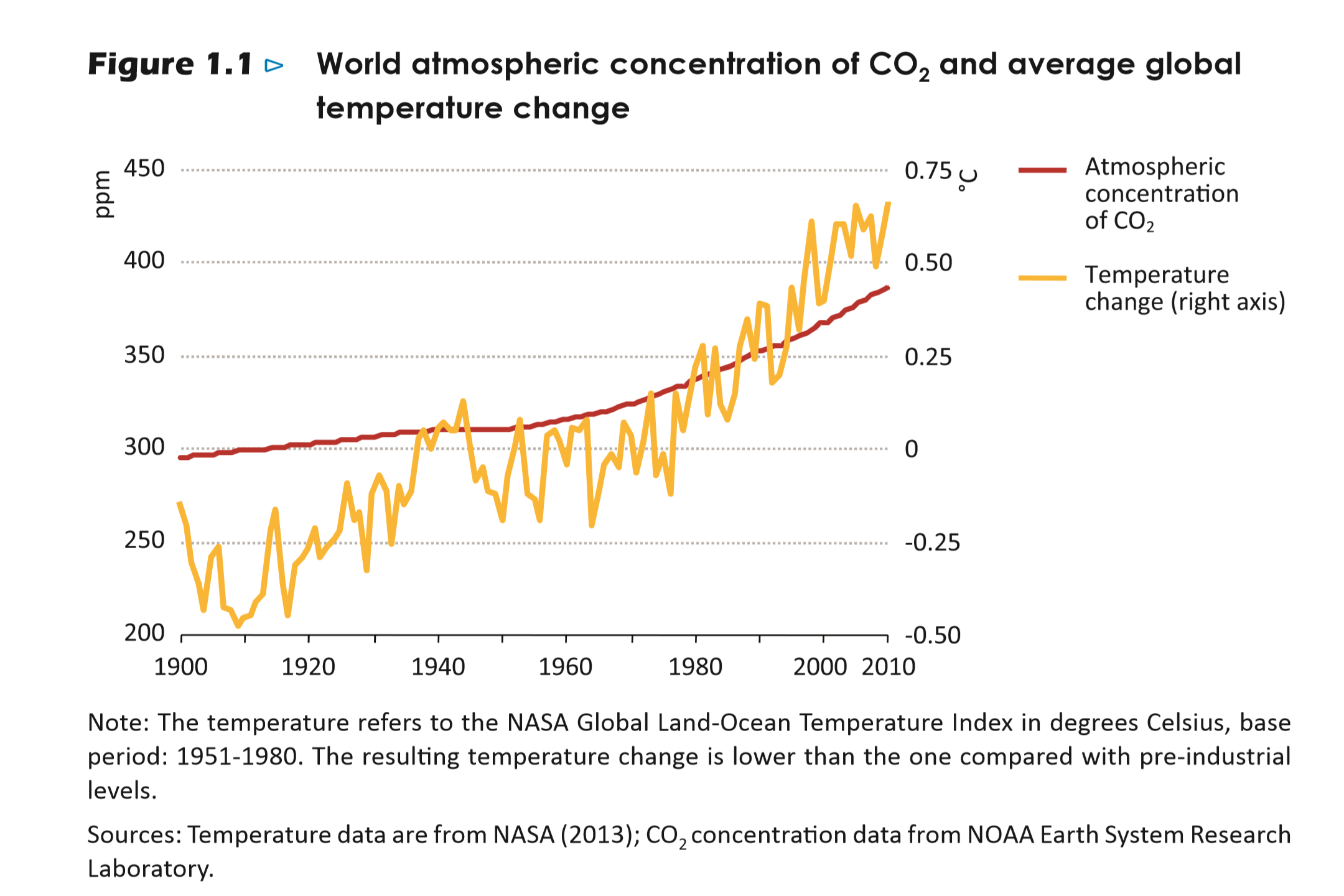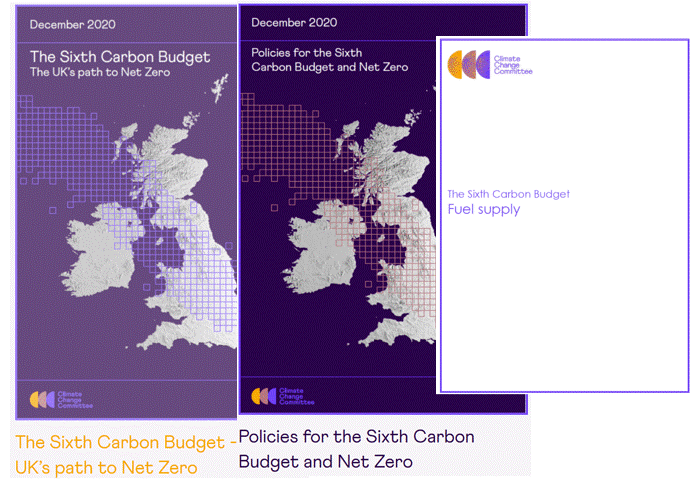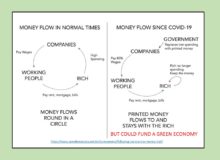If we continue to send CO2 into our atmosphere reaching a concentration of 450ppm CO2 eq there is just a 50% chance that global warming can be kept to 2°C and therefore only a chance that the consequences shown below will be less severe. source: the International Energy Authority’s Redrawing the Energy Climate Map – World Energy Outlook Special (p13).
The Scientific consensus is that exceeding 2°C is probably catastrophic, not that 2°C is safe.
The 50% chance of warming by 2°C is the same as flipping a coin. Though bookies would take bets from punters willing to lose on these odds, the insurance industry wouldn’t insure on this basis. Would we risk anything else we hold precious at 2-1 odds?
Where did the 2°C come from?
In The Climate Casino, William Nordhaus, an economist at Yale, likened our approach to Climate Change to gambling at roulette.
“Every year that we inject more CO2 into the atmosphere we spin the planetary roulette wheel……” and the more we continue increasing the emissions that warm the planet the more the odds are stacked against a favourable outcome.”
The odds of a catastrophic outcome are higher for instance if the Antarctic ice sheet collapses or acidification destroys oceans – but strangely there are risk averse people who want us to take this gamble.
Nordhaus proposed the 2-degree threshold in a 1977 paper Economic Growth and Climate: The Carbon Dioxide Problem.
“If there were global temperatures more than 2 or 3 degrees above the current average temperature, this would take the climate outside of the range of observations which have been made over the last several hundred thousand years“
and 2°C has been taken up as a symbolic target internationally.
See Sceptical Science for global temperatures up to Sept 2015.
The 50% odds of 3° by 2100
The UN IPCC 2014 Fifth Assessment Report painted a stark picture of the consequences of emitting carbon at the current (and increasing) rate. (p6)
“The ultimate objective…… stabilization of Greenhouse Gas concentration in the atmosphere at a level that would prevent anthropogenic interference with the climate system. Such a level should be achieved within a time frame sufficient to allow ecosystems to adapt naturally to climate change, to ensure that food production is not threatened and to allow economic development to proceed in a sustainable manner.”
The report looks at many scenarios, with the baseline where we take no action and continue at current emission levels.
But 2°C cannot be accepted as ‘safe’
The Centre for Alternative Technology published Zero Carbon making it Happen launched at COP21 and pointed out that “the expedient and ubiquitous use of speculative negative emissions to expand the available 2°C carbon budgets, implies a deeply entrenched and systemic bias in favour of delivering politically palatable rather than scientifically balanced emission scenarios“
The dangers of Fossil Fuels
The Guardian’s Keep it in the Ground campaign Mar 2015 explains how much carbon dioxide we can emit, and how much we are on track to emit:
“565 gigatons: “Scientists estimate that humans can pour roughly 565 more gigatons of carbon dioxide into the atmosphere by mid-century and still have some reasonable hope of staying below 2C,” is how McKibben crisply puts it. Few dispute that this idea of a global “carbon budget” is broadly right.
2,795 gigatons: This is the amount of carbon dioxide that if they were burned would be released from the proven reserves of fossil fuel – ie the fuel we are planning to extract and use.”
Although Coal, for instance, emits 10 times as much CO2 as Onshore Wind governments are still subsidising the use of Coal and energy companies are still investing in the exploration for more fossil fuels.
UK Decc’s Understanding of the Implications
Decc’s The Global Calculator is an open-source model of the world’s energy, land and food systems that allows you to design your own version of the future up to 2050 and see the implications for the climate.
The model is derided by Manicbeancounter:
“From the model, it is possible to entirely eliminate CO2 emissions by 2100 by a combination of three things – reducing the percentage travel in urban areas by car from 43% to 29%; reducing the average size of homes to 95m2 from 110m2 today; and for everyone to go vegetarian…..”
“it concerns me that it is more than likely the same people who are responsible for this nonsense are also responsible for the glossy plans to cut Britain’s emissions by 80% by 2050 without destroying hundreds of thousands of jobs; eviscerating the countryside; and reducing living standards, especially of the poor. “




